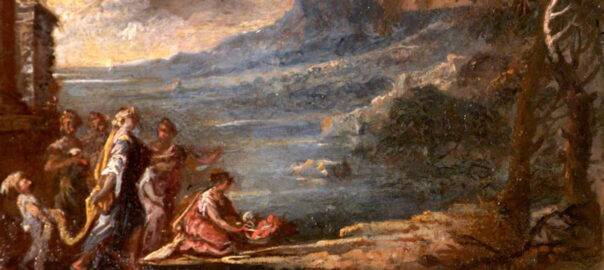
Stories and Storytelling:
Meta-Storytelling
National Trust, Public domain, via Wikimedia Commons
“The gift of story is wisdom.”
― Will Storr, The Science of Storytelling
A meta-story conveys overarching insights and a bigger picture beyond the face value tale presented. It connects in a specific way with the storyteller and the audience. The most impactful meta-stories accustom the reader’s mind/brain to an alternate consciousness—illogical, incongruous, timeless, comprehensive. An example would be a “frame story,” which is a story-within-a-story format that encompasses and explains other “little stories,” and is meant to have a certain effect. The One Thousand and One Nights (also known as the Arabian Nights) collection of tales is a classic example of this. To refer back to our introduction in this section—as Idries Shah concludes from over three decades of study, specific stories survive because they hold an “inner significance which is rarely glimpsed consciously, but which nevertheless acts powerfully upon our minds.”
We can consider this further in relation to the story of Moses. In another of Shah’s works, he expands on his point, using this tale as an allegory to convey the journey of meta-stories both through time and psychologically within our minds. Stories can, he says, be understood as a “Moses basket” where “the people, like the Nile, carried the basket. The people of understanding, like the Egyptian princess, could find and care for the content.”
With many tales in the meta-story genre, the characters’ interchanges and actions stand for our own thought processes. The 13th-century Sufi Jalaluddin Rumi says in his famous work the Mathnavi, “People say that these are stories which happened long ago. But naming ‘Moses’ serves as an external appearance. Moses and Pharaoh are two of your entities.” And in his definitive work The Sufis, Shah confirms this, saying that “Moses” symbolizes “a guiding thought, which transforms something apparently inanimate and inert into something ‘as fragrant as musk’—something with what might almost be called a life of its own.” And Rumi warns us to recognize and foster this perception: “Do not seek from within yourself, from your Moses, the needs of a Pharaoh.”
Again, stories were told, retold, changed and revised according to the time, the place, the people and the circumstances. The concern was never whether events were factually true—they did not represent history; that was never their function. The ancient world gave no importance to authorship or ownership of stories and had no conception of copyright. Oral stories were absorbed into the mythologies of different places and cultures, and versions of them, now written down, followed the same tradition. The Gospel of Mark, for example, was probably written to strengthen the faith of the early Greek Christians in the face of persecution. “Its themes of travel, conflict with supernatural foes, suffering, and secrecy resonate with Homer’s Odyssey and Greek romantic novels. Its focus on the character, identity, and death of a single individual reminds one of ancient biographies. Its dialogues, tragic outcome, and peculiar ending call to mind Greek drama,” says New Testament scholar Dennis R. MacDonald in “Early Christian Literature,” an article included in The Oxford Study Bible—Revised English Bible with the Apocrypha.
All three Abrahamic religions, Judaism, Christianity and Islam, hold that there was a Creation in which God “created” it all. But these dicta were produced a millennium or more before the last 600 years of science, before the language and understanding to convey the insights behind them was available. They were never intended to be taken literally.
It is no matter, then, that there are two Creation stories. Many early Christian fathers understood their allegorical nature. Origen of Alexandria in the second century wrote: “I believe that every man must hold these things for images under which a hidden sense is concealed.”
Maimonides (Moses Ben Maimon, 12th Century, Cordoba), one of the most celebrated rabbis, agreed. He wrote the following about Genesis in his work The Guide for the Perplexed:
We must not understand, or take in a literal sense, what is written in the book on the Creation, nor form of it the same ideas which are participated by the generality of mankind. Otherwise our ancient sages would not have so much recommended to us, to hide the real meaning of it, and not to lift the allegorical veil, which covers the truth contained there. When taken in its literal sense, the work gives the most absurd and most extravagant ideas of the Deity. ‘Whosoever should divine its true meaning ought to take great care in not divulging it.’ This is a maxim repeated to us by all our sages, principally concerning the understanding of the work of the six days.
Eight centuries have passed since this great polymath wrote these words. It may be time for us—the generality of mankind—to learn more about this unique form of literature, its function and how to approach it today.
